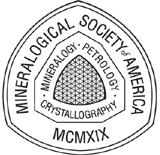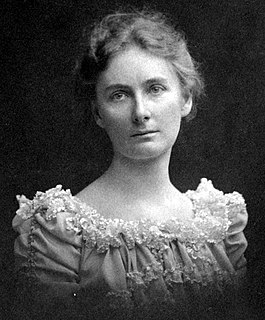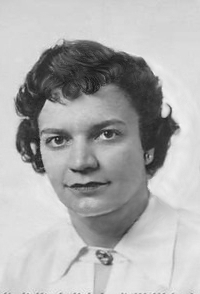Related Research Articles

The American Association for the Advancement of Science (AAAS) is an American international non-profit organization with the stated goals of promoting cooperation among scientists, defending scientific freedom, encouraging scientific responsibility, and supporting scientific education and science outreach for the betterment of all humanity. It is the world's largest general scientific society, with over 120,000 members, and is the publisher of the well-known scientific journal Science.

Charles Doolittle Walcott was an American paleontologist, administrator of the Smithsonian Institution from 1907 to 1927, and geologist. He is famous for his discovery in 1909 of well-preserved fossils, including some of the oldest soft-part imprints, in the Burgess Shale of British Columbia, Canada.

John Strong Newberry was an American physician, geologist and paleontologist. He participated as a naturalist and surgeon on three expeditions to explore and survey the western United States. During the Civil War he served in the US Sanitary Commission and was appointed secretary of the western department of the commission. After the war he became professor of geology and paleontology at Columbia University School of Mines.

Grove Karl Gilbert, known by the abbreviated name G. K. Gilbert in academic literature, was an American geologist.

The Society of Economic Geologists (SEG) is a scientific organization that promotes the study of geology as it relates to mining, mineral exploration, mineral resource classification and mineral extraction. The society's Publication Board publishes the scientific journal Economic Geology. The society serves 7,000+ members worldwide who are committed to advancing the science and the discovery of mineral resources through research, publications, courses, and field trips.

The Polish Academy of Arts and Sciences or Polish Academy of Learning, headquartered in Kraków and founded in 1872, is one of two institutions in contemporary Poland having the nature of an academy of sciences. It is co-owner of the Polish Library in Paris.

William Henry Holmes — known as W.H. Holmes — was an American explorer, anthropologist, archaeologist, artist, scientific illustrator, cartographer, mountain climber, geologist and museum curator and director.

The Psychonomic Society is one of the primary societies for general scientific experimental psychology in the United States. It is open to international researchers, and almost 40% of members are based outside of North America. Although open to all areas of experimental and cognitive psychology, its members typically study areas such as learning, memory, attention, motivation, perception, categorization, decision making, and psycholinguistics. Its name is taken from the word psychonomics, meaning "the science of the laws of the mind".

Charles Abiathar White was an American geologist, paleontologist, and writer whose publications total 238 titles. He was born at North Dighton, Massachusetts. He was the State geologist of Iowa in 1866-70, and professor of natural history in the State University of Iowa in 1867-73. He held a similar position at Bowdoin College in 1873-75, and was geologist and paleontologist of the United States Geological Survey between 1874 and 1892, and after 1895 was an associate in paleontology at the United States National Museum.

Charles David White, who normally went by his middle name, was an American geologist, born in Palmyra, New York.

The Mineralogical Society of America (MSA) is a scientific membership organization. MSA was founded in 1919 for the advancement of mineralogy, crystallography, geochemistry, and petrology, and promotion of their uses in other sciences, industry, and the arts. It encourages fundamental research about natural materials; supports the teaching of mineralogical concepts and procedures to students of mineralogy and related arts and sciences; and attempts to raise the scientific literacy of society with respect to issues involving mineralogy. The Society encourages the general preservation of mineral collections, displays, mineral localities, type minerals and scientific data. MSA represents the United States with regard to the science of mineralogy in any international context. The Society was incorporated in 1937 and approved as a nonprofit organization in 1959.

Frank Wigglesworth Clarke of Boston, Massachusetts, and Washington, D.C. was an American scientist and chemist. Sometimes known as the "Father of Geochemistry," Clarke is credited with determining the composition of the Earth's crust. He was a founder of The American Chemical Society and served as its President, 1901.

Florence Bascom was the second woman to earn her Ph.D in geology in the United States, and the first woman to receive a Ph.D from Johns Hopkins University, which occurred in 1893. She also became the first woman to work for the United States Geological Survey, in 1896. As well as being one of the first women to earn a master's degree in geology, she was known for her innovative findings in this field, and led the next generation of female geologists. Geologists consider her to be the "first woman geologist in this country America."
The Geological Association of Canada (GAC) is a learned society that promotes and develops the geological sciences in Canada. The organization holds conferences, meetings and exhibitions for the discussion of geological problems and the exchange of views in matters related to geology. It publishes various journals and collections of learned papers dealing with geology.

Thomas Brennan Nolan was an American geologist who was director of the United States Geological Survey (USGS) from 1956 to 1965. The mineral nolanite is named in his honor. He was generally known as Tom Nolan.

The United States Geological Survey Library is a program within the United States Geological Survey, a scientific bureau within the Department of Interior of the United States government. The USGS operates as a fact-finding research organization with no regulatory responsibility.
Helen Margaret Duncan was a geologist and paleontologist with the United States Geological Survey from 1945 to 1971, where she worked in the Paleontology and Stratigraphy Branch. Duncan was considered one of the strongest women in the Cincinnati geology department; her contributions to the Lipalian Research Foundation and the Pick and Hammer shows were additional work of her time. Duncan paved the path for many geology scholars to follow with her discoveries on fossil records and her studies in paleontology and stratigraphy.

Thomas Wayland Vaughan was an American geologist and oceanographer. He worked with the United States Geological Survey and United States National Museum, investigating the geology of the West Indies, Panama Canal Zone, and the eastern coast of North America. In 1924 Vaughan became director of the Scripps Institution of Oceanography and held the post until his retirement in 1936. His research work concentrated on the study of corals and coral reefs, the investigation of larger foraminifera, and oceanography.
The Geoscience Information Society (GSIS) is a nonprofit organization reflecting all aspects of the geosciences that works toward solutions to the information challenges faced by geoscience researchers. Membership in the Society reflects the different groups interested in addressing these challenges including commercial firms, academic institutions, government bodies, publishers and other related organizations, both national and international.

Ruth Anna Marie Schmidt was an American geologist and paleontologist who was a pioneer for women scientists. She spent most of her career in Alaska, where she established a United States Geological Survey (USGS) field office and established the first Department of Geology at the Anchorage Community College, now part of the University of Alaska Anchorage. In 1964, Schmidt directed the initial assessment of the damage done to the city of Anchorage by the Great Alaska Earthquake, the largest earthquake in North American history, and the second largest earthquake ever to be recorded. She worked for the USGS in Washington, DC during the era of McCarthyism and was investigated twice for disloyalty because of her membership in the interracial Washington Cooperative Bookshop. She was cleared both times. She earned a number of awards, honors, and letters of commendation and appreciation. After her death in 2014, she was recognized as a philanthropist.
References
- ↑ Geological Society of Washington website
- ↑ Centennial History of the Geological Society of Washington, 1893-1993. Edited by Eugene C. Robertson. Geological Society of Washington, Washington, D.C. 1993